
If you’re a regular flyer on the Sydney-Melbourne or Sydney-Canberra routes, you’ve probably experienced your fair share of last-minute cancellations. These two routes suffer the most cancellations of any major Australian domestic route.
Last month, according to BITRE data, QantasLink cancelled 10.9% of Canberra-Sydney flights and 8.7% of Sydney-Canberra flights. On the Melbourne-Sydney route, an average of 7.8% flights were cancelled across all airlines. Virgin Australia had the highest cancellation rate between Sydney and Melbourne.
That’s much higher than the average cancellation rate for May 2023 of 3% across all major domestic routes. It’s also higher than the long-term industry average cancellation rate of 2.1%.

In most cases, if an airline cancels your Melbourne-Sydney flight, it can re-accommodate you on another flight leaving within an hour or two. But with all the aisle seats already taken on the flight 30 minutes later, your carefully selected seat allocation could easily turn into a middle seat near the toilets.
So, why are the Melbourne-Sydney and Canberra-Sydney so disproportionately affected by cancellations?
Are airlines banking slots or consolidating undersold flights?
There are many reasons why flights might need to be cancelled, for reasons within and outside of the airline’s control. For example, a plane might need unscheduled maintenance or there may not be enough flight crew. But this applies to all routes, not just a few of the most popular routes in and out of Sydney.
Earlier this month, Canberra Airport CEO Stephen Byron accused Qantas in particular of scheduling more flights between Canberra and Sydney than it intended to operate in order to bank slots at Sydney Airport.
“What’s happening is [Qantas is] over-scheduling flights and then at the last minute just, the ones that don’t have enough passengers, cancelling at the last minute and consolidating them,” Mr Byron told ABC Radio Canberra.
“Sydney has a limited number of slots that are allocated for seasonal periods, and Qantas overbook them so that they’re not available to competitor airlines. The problem is that the slots are not taken away unless they cancel more than 20% of the [flights].”
Some frequent flyers have also speculated that many airlines – not just Qantas – consolidate flights with low bookings to save money.

Qantas strongly denied the claim made by Canberra Airport’s CEO.
“Canberra Airport knows full well that air traffic control shortages in Sydney are causing more cancellations, with flights on dozens of days so far this year impacted by the shortages,” Qantas told ABC Radio Canberra.
We’re not suggesting that airlines deliberately cancel undersold flights to save money. But if they wanted to, they could pretty much get away with it because Australia lacks EU-style delay compensation laws. Australian airlines don’t owe anything to passengers that they involuntarily move to later flights. The only real risk is unhappy customers and reputation damage if an airline does it too often.
Does Sydney Airport have a shortage of air traffic controllers?
Qantas isn’t alone in blaming chronic air traffic control shortages for flight disruptions. In February 2023, The Australian Financial Review reported that Airservices Australia was suffering from an usually high rate of absenteeism. Airservices Australia provides air traffic control (ATC) services at airports including Sydney.
Australian Frequent Flyer asked Airservices Australia whether a shortage of air traffic controllers was leading to a higher than normal rate of flight cancellations at Sydney Airport.
Airservices Australia is not able to comment on individual airlines or their scheduling decisions. But a spokesperson for Airservices Australia issued the following response to our question about ATC staffing:
Airservices Australia rejects claims the organisation has a shortage of air traffic controllers (ATCs) at the Sydney Terminal Control Unit (TCU). Airservices employs more than 900 ATCs at 29 of Australia’s busiest airports, 97 per cent of which are in operational roles. Airservices requires about 800 ATCs to fully staff the ATC network.
In addition, the Australian Transport Safety Bureau (ATSB) and Civil Aviation Safety Authority (CASA) both recently confirmed that Airservices Australia does not have a shortage of ATCs at the Sydney TCU.
We require 47 ATCs for the Sydney TCU and there are 47 operational ATCs employed at the facility. Up to 13 ATCs are required to fully staff one shift.
In June 2022, CASA undertook a surveillance event at the Sydney TCU and did not raise any findings against Civil Aviation Safety Regulation (CASR) 172.110 in relation to ATC staffing levels at the Sydney TCU. Civil Aviation Safety Regulation (CASR) 172.110 is the requirement to have sufficient ATCs to safely manage aircraft.
CASA did raise a finding against CASR 172.115 in relation to supervisory positions, which we are currently addressing. These positions do not affect Airservices’ capacity to provide safe and efficient air traffic management services at the Sydney TCU.
Airservices Australia rejects the claim of staff shortages impacting flight schedules. But there are many other reasons airlines may need to cancel flights which may be related indirectly to “air traffic control”, other than staff shortages.
For example, there are often cancellations on windy days when Sydney Airport needs to operate on a single runway. An airline may also choose to cancel a flight in order to re-allocate an aircraft after ATC issues a “ground delay” due to airport congestion.
So, there’s no simple “one-size-fits-all” answer as to why flights get cancelled. It’s not necessarily the fault of ATC, nor the airline.
Airservices Australia has recently launched an Air Traffic Management dashboard on its website, where the public can see the organisation’s daily performance figures. This dashboard shows delays and cancellations that can be attributed to air traffic control, as well as other factors. “Other attributed” disruptions could be the result of anything from inclement weather to aircraft issues, airport capacity constraints and other operational decisions.
Cancelling a Melbourne-Sydney or Canberra-Sydney flight is less disruptive
Another reason that Sydney Airport is disproportionately affected by cancellations is the strict limit of 80 aircraft movements per hour. The airport cannot physically handle more traffic than this (nor is it allowed to). The airport also has a curfew. This leads to inevitable cancellations if there are disruptions such as extreme weather that delay a large number of flights.
When airlines inevitably need to cancel flights, they try to minimise the disruption to passengers. On busy routes like Melbourne-Sydney, there are so many flights that airlines can fairly easily move passengers to another flight leaving at a similar time. This could be as little as 15 minutes later during peak periods.
For example, if Virgin Australia cancelled a Sydney-Launceston flight, the next direct service probably wouldn’t be until the next day. That’s much more inconvenient for the passenger. It’s also more costly for the airline, which would probably need to provide meals and hotel accommodation during the delay.
In this scenario, if there was a mechanical problem with the aircraft scheduled to fly to Launceston, Virgin might pull an aircraft off Sydney-Melbourne and send it to Launceston instead. This minimises the overall disruption to its passengers and network.

Similarly, if there’s an issue with a QantasLink Dash 8 aircraft in Sydney, it’s easier for the airline to cancel a flight to Canberra than to Moree. The next flight to Canberra might be less than an hour later, while there are only two daily flights to Moree.




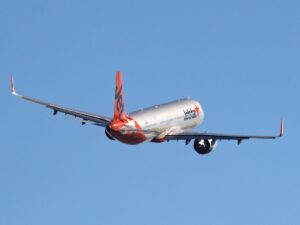

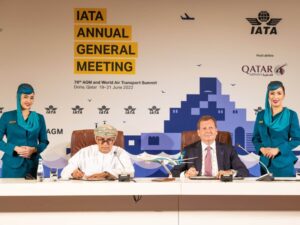
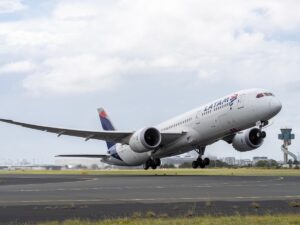




















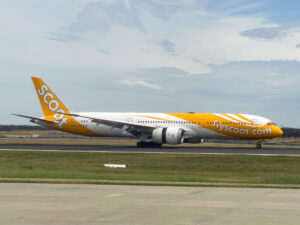












































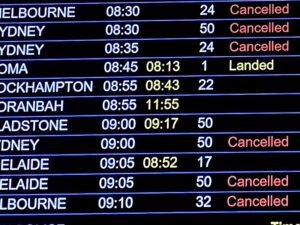






Community Comments
Loading new replies...
Join the full discussion at the Australian Frequent Flyer →